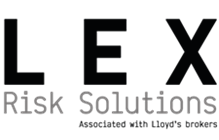Insurance Concept
10th March, 2015
The Rationale for Self-Insurance
The Self-Insured option versus Risk Transfer in a conventional manner to the Commercial Insurance market can offer significant benefits to the parties concerned. Such parties normally fall into one of two categories, namely:
- Corporations that wish to minimise their own cost-of-risk, achieved typically via a Captive or Protected Cell Insurance structure, or;
- Businesses that identify an opportunity to participate in the risk programme of their customers – also via a Captive or Protected Cell mechanism – and to share in the insurance underwriting profits that otherwise would be transferred.
When considering possible new, or enhanced, risk financing structures it is important to recognise the pre-requisite conditions that should normally be in place to justify significant risk retention rather than conventional risk transfer. These are:
- Sizeable insurance premium volume;
- Wide spread of risk;
- Good loss record;
- Sound risk management and control practices;
- giving rise therefore to;
- A reasonable expectation of an on-going consistently good loss situation.
Once those criteria are satisfied there are numerous benefits that could be derived from enhanced self-insurance techniques including not only additional profits but also cash flow, budgeting and fiscal advantages.
A move away from the conventional insurance market can be of particular importance in terms of ‘control’. The behaviour and attitudes of Commercial Insurers can – and often do – change very rapidly, sometimes dictated, for example, by a change in corporate philosophy. Self-insurance arrangements place the ‘control’ firmly in the hands of the parent organisation.
Self-insurance is not without risk. Circumstances can change and capital needs to be committed. The degree of extra risk that an organisation might be prepared to accept will be dependent, in addition to the upside factor of potential extra profit, on a range of factors including:
- The risk tolerance of the organisation and therefore its financial ability to take on increased risk internally, and;
- Its risk appetite or, quite simply, willingness to assume additional risk.
When considering any form of self-insurance venture it is important that a medium to long term view is adopted. Short term gains may be made but the full benefits of a formal self-insurance arrangement will be achieved over a number of years.
Once established, opportunities usually arise to build upon the initial self-insurance platform with, for example, the absorption of more risk and / or the inclusion of other classes of insurance.

